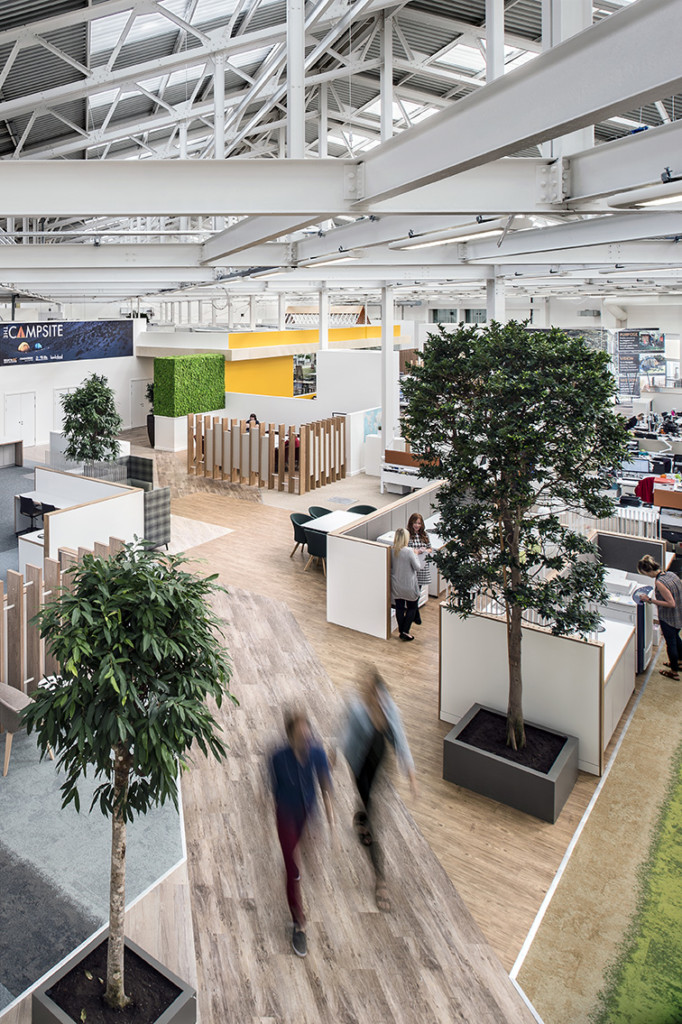
Research shows we are finding noise increasingly distracting at work. Let office plants soften the din.
Since we came out of lockdown, many office workers have been looking afresh at the value of the workplace compared to working from home. The commute, in-person support, team- vs lone-working preferences and even the quality of coffee have all come under more scrutiny as we have considered our ideal work setup.
Noise levels could be a significant factor in how productive and, ultimately, happy we are in the office. A new study by IRIS Clarity, found that a staggering 71% of respondents would like a quieter workplace, with 54% often using headphones to block out ambient sound.
Offices can be noisy places, especially when open plan, as they often are. Phone calls, conversations among colleagues, printers, footsteps… a busy office is full of different sounds which may impact concentration. Hard flooring and vast windows can exacerbate the problem, as sound reverberates more easily off hard surfaces. Soft furnishings can help to counteract this, but another very effective way is to increase the number of office plants around your workplace.
Plants help reduce noise pollution in the office in a range of ways. Their leaves, branches and bark can absorb and deflect noise through a process known as sound attenuation. Sound attenuation describes the process where noise is ‘dampened’ by an interruption to the passage of sound waves.

Absorb, reflect, defract and mask
Plants increase sound attenuation through absorption, deflection, refraction and masking.
Large, thick leaves and bark are particularly effective at absorbing sound, due to their textured surfaces.
When sound waves pass through leaves and branches of indoor office plants, or come up against the trunk of an indoor, the passage of the waves are deflected and sent in multiple directions, reducing noise levels around the office.
Sound is also refracted when it has to pass through the barriers created by plant structures. As plant structures are quite complex, with leaves, branches and trunks, they offer multiple forms of refraction. Naturally, planting structures which cover large surface areas, such as living walls and hedges, refract sound most effectively, acting much as carpeting does by significantly limiting the ability of sound waves to bounce around off walls and floors and thereby reducing echoes.
Masking is simply the noise plants make masking other sounds. This occurs less with indoor office and house plants, but is effective with outdoor planting and trees, where the wind rustling through foliage and branches block out brash noises with far more pleasant sounds.
Our clients mostly want plants to improve air quality or to create more aesthetically pleasing interiors, but noise reduction is often a pleasant added bonus. And, with many employers keen to encourage their teams to spend more time in the office, being able to offer a space with softened ambient sounds can only help to coax them back.